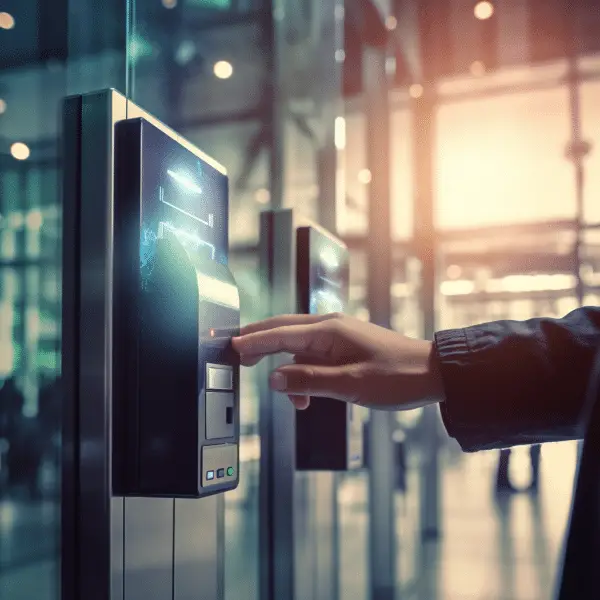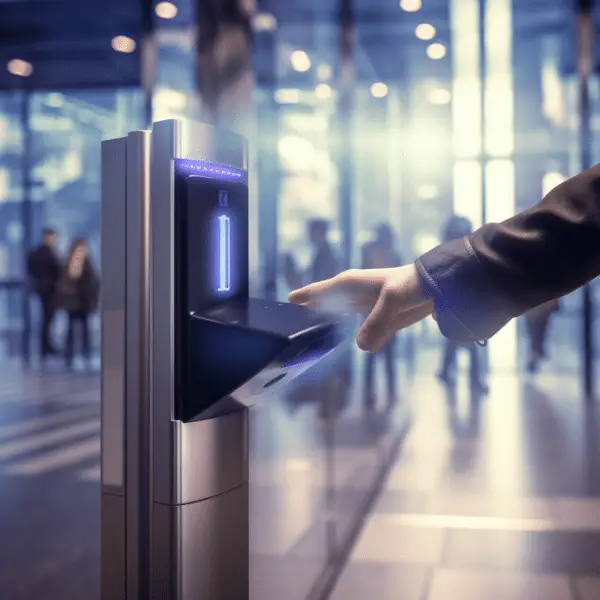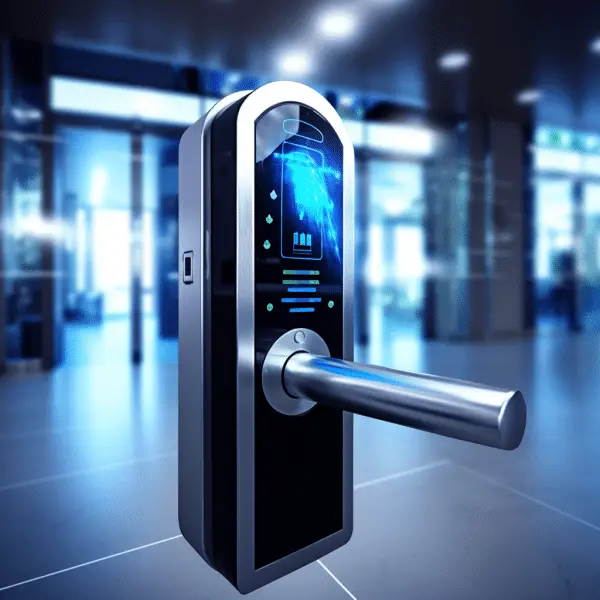Access control systems are an essential component of ensuring the security of premises in the United States. There are several myths about these systems that must be addressed. By examining the factual data, I aim to debunk these misconceptions and provide a clear understanding of the true capabilities of access control systems.
Key Takeaways:
- Access control systems play a crucial role in securing premises.
- They are difficult to bypass and have several security layers.
- Access control systems are available at various price points, making them accessible to businesses of all sizes.
- These systems are reliable and tested and maintained.
- By debunking the myths surrounding access control systems, we can promote their effectiveness and adoption.
Myth 1: Access controls are by passable.
Access control systems are easily overcome, compromising facility security. Not so. Access control uses biometric authentication and encryption for security.The systems are thoroughly tested and upgraded to fix vulnerabilities.Debunking this myth and demonstrating access control systems’ effectiveness in preventing unauthorized access is vital.
One of the primary reasons access control systems are difficult to bypass is the use of advanced authentication methods. Biometrics, such as fingerprint or iris scanning, ensure that only authorized individuals can gain entry. These unique biological markers are extremely difficult to replicate, making it nearly impossible for intruders to bypass the system.
Access control systems
In addition to biometrics, access control systems also utilize encryption protocols to protect data transmission. These protocols ensure that the communication between the access control system and the authentication database remains secure. Although an intruder may intercept the data, it would be encrypted and unreadable, boosting system security.

“Access control systems are built with multiple layers of security, making them highly resistant to bypassing. The combination of advanced authentication methods and encryption protocols ensures that only authorized individuals can access protected areas.”
To further enhance the security of access control systems, regular updates and patches are provided by the system manufacturers. These updates address any identified vulnerabilities and ensure that the system remains resilient to evolving threats. System administrators should promptly install these updates to maintain the highest level of security.
| Access Control System Security Features | Description |
|---|---|
| Biometrics | Utilizes unique biological markers like fingerprints or iris patterns for authentication, making it extremely difficult to bypass. |
| Encryption Protocols | Encrypts data transmission between the access control system and authentication database, ensuring secure communication. |
| Regular Updates | System manufacturers provide updates that address vulnerabilities and enhance the overall security of the system. |
Debunking the concept that access control systems are easily avoided reveals their efficiency in preventing unlawful access.Access control systems secure premises using enhanced authentication, encryption, and regular upgrades.
Myth 2: Access control systems are expensive and only suitable for large organizations.
One common misconception about access control systems is that they are expensive and only practical for large organizations. However, this is far from the truth. Access control systems are available in a range of price points, making them accessible to businesses of all sizes and budgets. Whether you are a small start-up or a large corporation, there are options available that can meet your specific needs.
Furthermore, access control systems are highly scalable, meaning they can grow with your organization as it expands. You can start with a basic system and add more advanced features and functionalities as your requirements evolve. This enables you customize the system instead of being stuck with one solution.
By dispelling the myth that access control systems are expensive and only suitable for large organizations, we can highlight the affordability and versatility of these systems. Businesses of all sizes can benefit from the enhanced security, control, and peace of mind that access control systems provide.
| Benefits of Access Control Systems for Small Businesses | Benefits of Access Control Systems for Large Organizations |
|---|---|
| Enhanced security and protection against unauthorized access | Centralized control and management of multiple access points across different locations |
| Ability to grant and revoke access permissions easily | Integration with other security systems such as video surveillance and alarms |
| Increased employee accountability and monitoring of entry and exit times | Detailed access logs and audit trails for compliance purposes |
| Protection of sensitive data and assets | Scalability to accommodate a large number of users and access levels |
Conclusion
Access control systems are not just for large organizations with big budgets. They are affordable, scalable, and adaptable to businesses of all sizes. By debunking the myth that access control systems are expensive and exclusive to large companies, we can encourage small and medium-sized businesses to embrace these security solutions. Whether you need basic access control or a more advanced system with additional features, there is a solution that can meet your needs and budget.
Myth 3: Access control systems are prone to technical failures
Another common myth surrounding access control systems is that they are prone to technical failures, leading to frequent disruptions in security measures. However, this misconception is far from the truth. Access control systems are reliable and useful due to their sturdy design and modern technologies.
“Access control systems undergo rigorous testing and quality assurance processes before deployment, guaranteeing their performance and minimizing the likelihood of technical failures.” – Industry Expert
These systems have redundancy and fail-safe measures to mitigate technological difficulties. Regular monitoring and maintenance improve operating integrity. Backup systems and emergency access methods like key cards or PIN numbers can preserve security during an interruption.
Access control systems also have dedicated technical support teams that resolve difficulties quickly. These experts upgrade the systems with the newest firmware and security updates to fix vulnerabilities and optimize performance.
Real-world Examples of Access Control System Reliability
Access control systems are trustworthy in many businesses, according to a top security firm study.For example:
- In a large corporate office building, the access control system successfully registered over 99% of the authorized personnel, showcasing its accuracy and dependability.
- In a healthcare facility, access control systems seamlessly integrated with other security measures, including CCTV cameras and alarms, ensuring comprehensive protection.
- In a manufacturing plant, access control systems with biometric authentication provided secure access to restricted areas, minimizing the risk of unauthorized entry and theft.
These real-world examples highlight the reliability and effectiveness of access control systems in diverse environments. They debunk the myth that these systems are prone to technical failures, emphasizing their importance as a robust security measure.
| Common Technical Issues | Solutions |
|---|---|
| Reader malfunction | Regular maintenance, prompt repairs, or replacement |
| Power outages | Backup power supply and battery backups |
| Software glitches | Patching and updating software regularly |

Debunking Common Myths About Access Control Systems
Dispelling safety myths about these gadgets is crucial. Insecure systems suffer from readily overcome access constraints. Common misconceptions hinder encryption and biometrics.
Myth 2: Access control systems are expensive and only suitable for large organizations
Another prevalent myth is that access control systems are prohibitively expensive and only practical for large organizations. In reality, access control systems are available in a range of price points, making them accessible to businesses of all sizes. Additionally, these systems are highly scalable, allowing for customization that meets the specific needs and budget of any organization.
Myth 3: Access control systems are prone to technical failures
A lot of people think that technology problems with access control systems often cause security measures to be interrupted. Access control systems have backups and fail-safes to make sure they work. These systems keep their functionality and fix any possible technical problems by going through rigorous testing, quality assurance procedures, and regular maintenance. This gives people faith in their dependability.
Debunking the most common myths about entry control systems is important to get the word out about how useful, affordable, and reliable they are for keeping everything safe. We can get more people and businesses to use access control systems as an important part of keeping buildings safe and making sure security measures work by teaching people and businesses about their full possibilities.
FAQ
Are access control systems easily bypassed?
Access control systems use biometrics and encryption to provide various security layers.These systems undergo rigorous testing and receive regular updates to address any vulnerabilities.
Are access control systems expensive and only suitable for large organizations?
No, access control systems are available in a range of price points, making them accessible to businesses of all sizes. These systems are highly scalable, so they can fit any organization’s goals and budget.
Are access control systems prone to technical failures?
No, access control systems are built with redundancy and fail-safe mechanisms to ensure reliable operation. They undergo rigorous testing and quality assurance processes before deployment. Regular maintenance and updates help to address any potential technical issues and ensure ongoing functionality.

